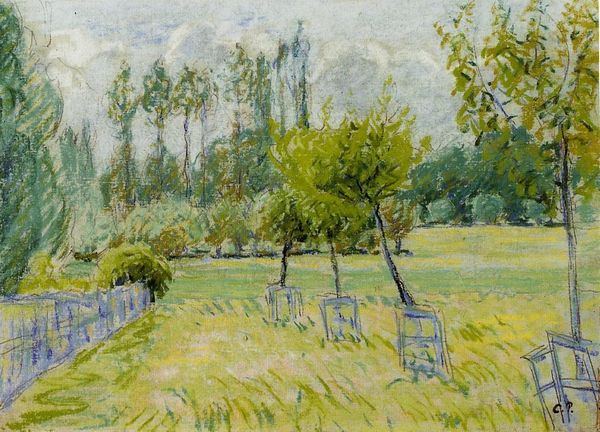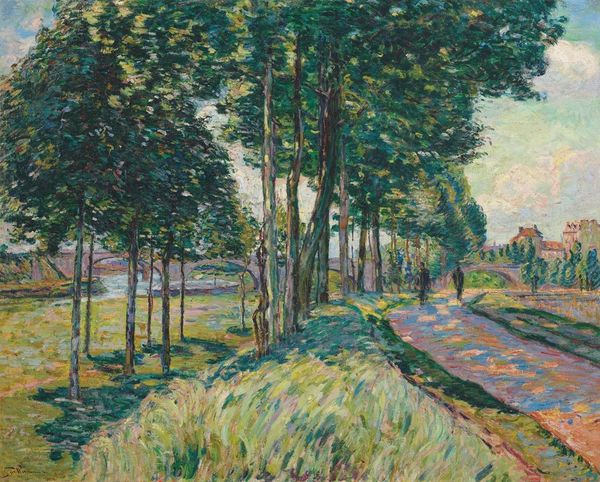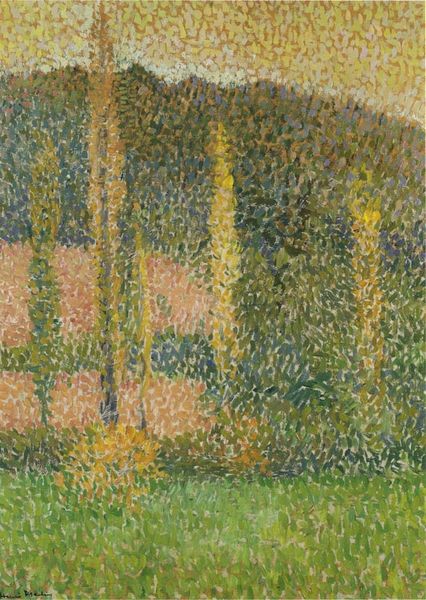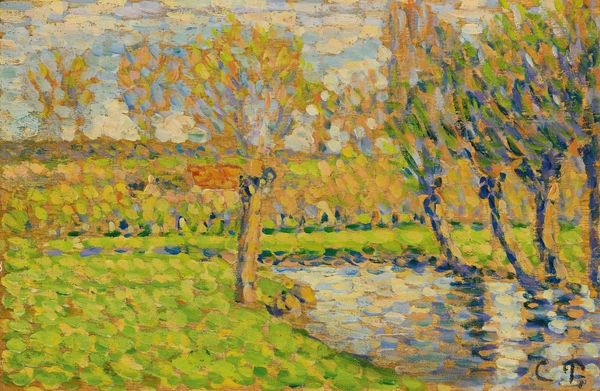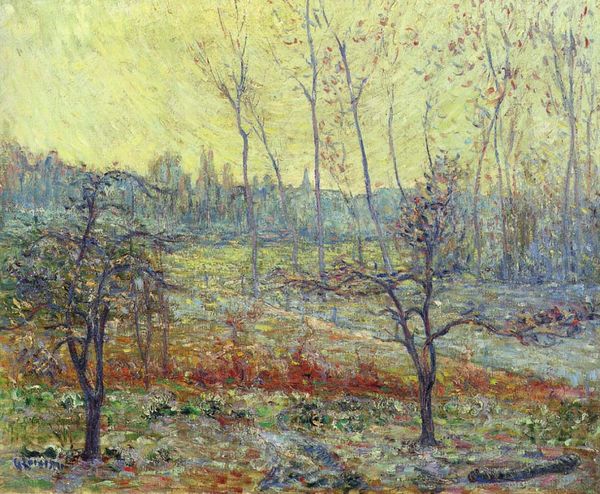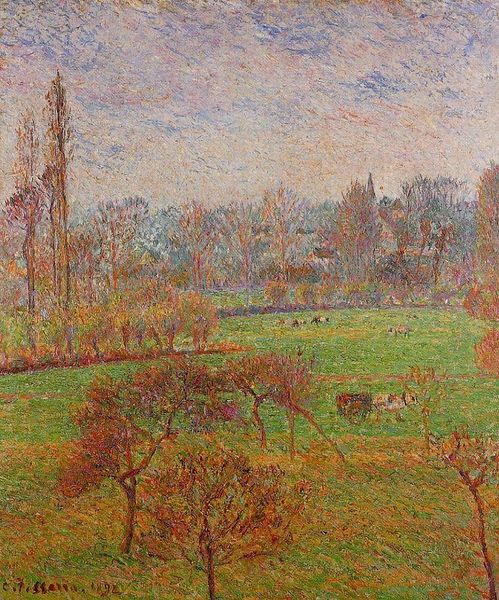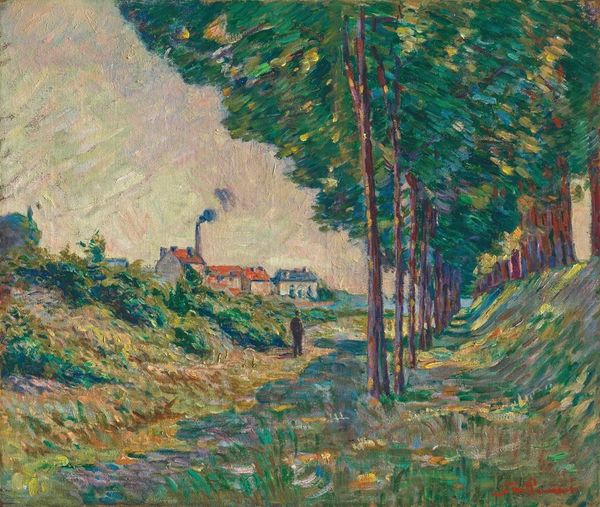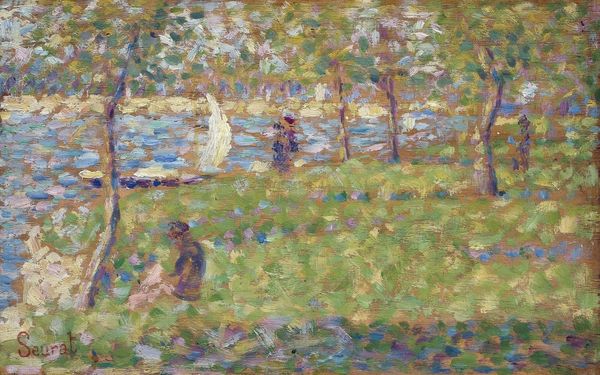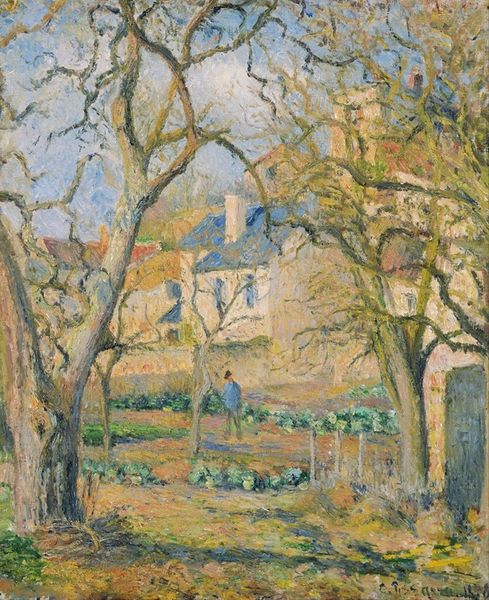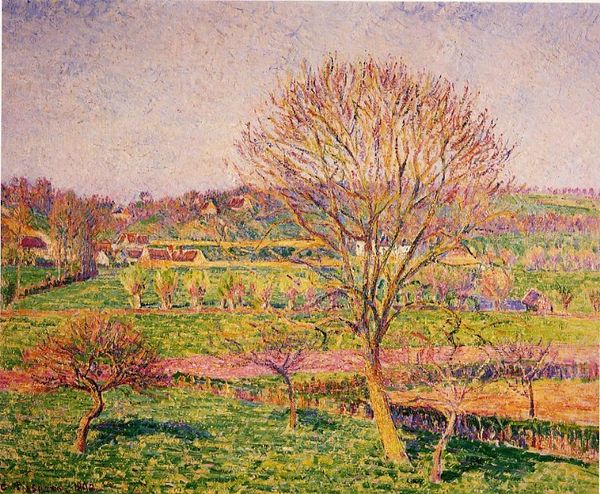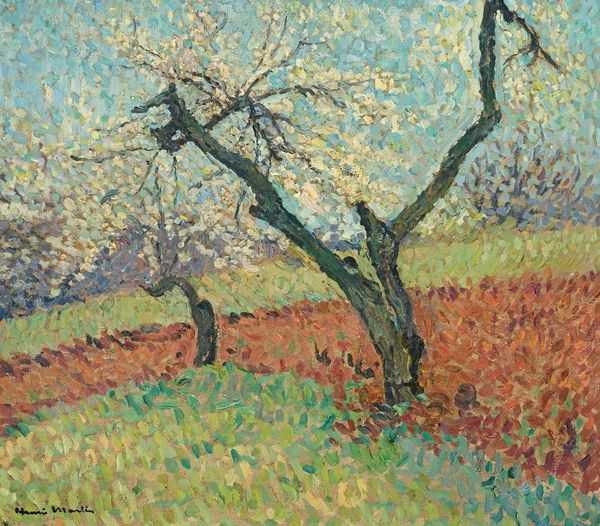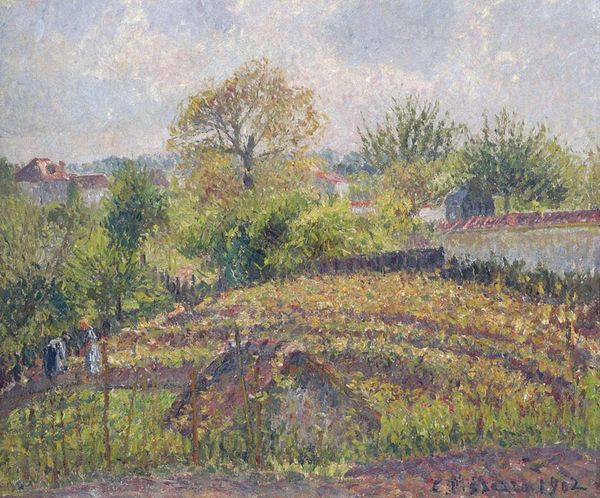
Copyright: Public domain
Curator: The pervasive greens and blues initially suggest a familiar peaceful scene, almost domestic. Editor: And a very particular kind of domesticity, one imbued with late 19th-century utopian socialist ideals. This is "The Garden, Epping" by Lucien Pissarro, painted in 1895. Pissarro, deeply influenced by his father Camille, brought impressionism to England and integrated it with anarchist thought. Curator: I notice the dominant presence of fences. It suggests a boundary, a controlled natural space. Does that confinement reflect a societal structure he's responding to? Editor: Possibly. Pissarro’s move to Epping wasn't just an aesthetic choice, but also a political one. The garden becomes a space for reimagining social relations outside of industrialized, urban alienation. We need to consider how the image might idealize rural labor and community as a form of resistance against capitalist modernity. The painting’s emphasis on ordinary, accessible scenes embodies the rejection of elitist art forms. Curator: Absolutely. And it's crucial to unpack the layers of class and labor represented, and unrepresented, in these supposedly idyllic landscapes. What voices are omitted? Are we romanticizing the rural working class? Editor: It is very interesting to note that Pissarro later moved to London after being disappointed that life in Epping hadn't met his socialistic expectations, implying that reality never really aligns with artistic ideals, right? The artwork challenges institutions and represents real people, however imperfectly. Curator: The artwork still manages to make us consider that even something seemingly natural, or innocent, carries societal and personal meaning. Editor: Exactly! Pissarro challenges us to contemplate the intricate connections between art, politics, and the everyday, hopefully prompting reflections beyond mere aesthetics.
Comments
No comments
Be the first to comment and join the conversation on the ultimate creative platform.
